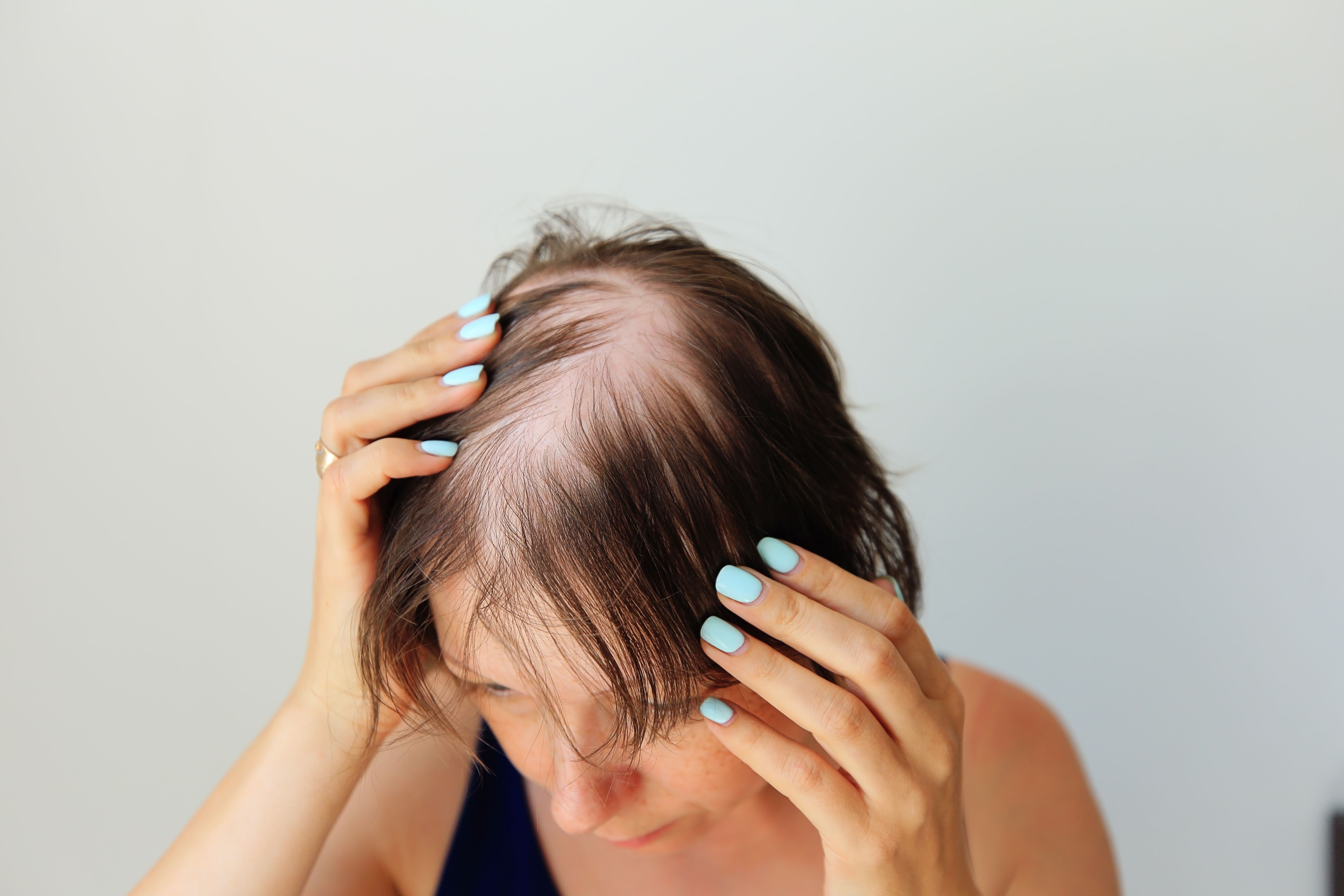- Center on Health Equity & Access
- Clinical
- Health Care Cost
- Health Care Delivery
- Insurance
- Policy
- Technology
- Value-Based Care
Out-of-Pocket Spend Imposes Significant Economic Burden in Alopecia
A new analysis evaluated the economic implications of alopecia on women and their families, with significant out-of-pocket expenses attributed to treatments and measures to conceal the condition.
Lack of adequate insurance coverage for most alopecia treatments, whether they be alternative treatments, over-the-counter products, camouflaging agents, or cranial prostheses, has a significant economic impact on women and their families, according to the results of a new cross-sectional survey recently published in International Journal of Women’s Dermatology.1
Alopecia is an autoimmune condition that attacks hair follicles, and it typically occurs on the head and face. Hair loss can be extensive or in small, round patches, and there is no cure.2
Hair loss | Image Credit: Nadya Kolobova - stock.adobe.com

“Alopecia, a chronic hair loss condition, has significant psychological, financial, self-identity, and quality-of-life impacts,” the study authors wrote, “and women and their families often resort to alternative therapies.”
The patients included in this study visited a hair loss clinic in New York City between March and May 2023, where they were surveyed for demographics, type(s) of hair loss, range of OTC and adjunctive treatments, and associated medical expenses. There was a 100% response rate to 100 administered surveys, with the patient population primarily female (64%), White (76%), aged 25 to 44 years (60%), and insured (98%). Seventy percent reported having nonscarring alopecia; 10%, scarring alopecia; and 20%, did not answer/unclear diagnosis. All reported chronic alopecia (> 6 months).
Spend categories for the past year were less than $50, $51 to $100, $101 to $250, $251 to $500, over $500, did not answer, and did not purchase.
For nondermatologist health care providers, 60% of the patients with scarring alopecia spent less than $50 compared with 50% of the patients who had nonscarring alopecia. The next highest category of spend for each group was over $500, with 20% and 26%, respectively, reporting this annual expense. In this category, the population with nonscarring alopecia had a wider variety of spend, with 4% reporting they spent $51 to $100; 10%, $101 to $250; and 7%, $251 to $500. In contrast, the remaining 20% of the patients who had scarring alopecia spent $101 to $250.
When OTC hair growth product use was evaluated, 66% of the patients with nonscarring alopecia reported they had purchased at least 1 OTC product within the past year vs 80% of those who had scarring alopecia; 74% and 88%, respectively, did not report symptom improvement. The top 3 categories of spend for scarring alopecia were over $500 (50%), $51 to $100 (20%), and $101 to $250 (10%), and for nonscarring alopecia, over $500 (34%), $101 to $250 (21%), and $251 to $500 (13%).
For those who purchased camouflaging agents, 50% of the scarring alopecia cohort spent more than $500 compared with 9% of the nonscarring alopecia cohort. Further, the former group was more likely to spend more compared with the latter: 10% each of the patients with scarring alopecia spent $101 to $250 and $251 to $500 within the past year. Individuals with nonscarring alopecia were more likely to spend less than $50 (20% vs 10%) and $51 to $100 (6% vs 0%), and less likely to spend $101 to $250 (7%) or $251 to $500 (0%).
Seventy-one percent of those with nonscarring alopecia who bought camouflaging agents noted that insurance did not cover the costs, and 45% reported mild to extreme stress as a result. Approximately 86% of those with scarring alopecia who purchased camouflaging agents said they did not get insurance to cover the costs, and 83% reported mild to extreme stress from this extra spend.
Overall, individuals from both groups who expressed daily concern about their hair had a 2.9 greater chance of spending more than $500 on nondermatological health care providers vs an alopecia specialist dermatologist (OR, 3.90; 95% CI, 1.51-10.10).
Despite noting that their sample size was small, at just 100 subjects, the authors underscore that their findings suggest illness type has great potential to have an impact on spending patterns of patients.
“The financial burden of alopecia is underexplored in the literature, with most studies focusing on alopecia areata. These findings are valuable for dermatologists, as they highlight the financial burden experienced by alopecia patients,” they concluded. “Patients should discuss financial barriers with their dermatologist during initial appointments to guide the selection of affordable treatments.”
References
- Ingrassia JP, Buontempo MG, Alhanshali L, et al. The financial burden of alopecia: a survey study. Int J Womens Dermatol. Published online November 1, 2023. doi:10.1097/JW9.0000000000000118
- Alopecia areata. National Institute of Arthritis and Musculoskeletal and Skin Diseases. Updated April 2021. Accessed November 29, 2023. https://www.niams.nih.gov/health-topics/alopecia-areata
